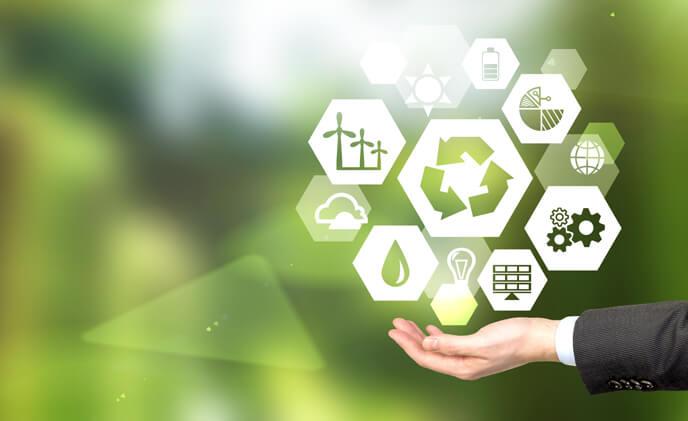As IoT devices continue to increase in popularity, concerns for the climate and environment are pushing engineers to find alternative technologies when developing new IoT devices, and “Large Scale Electronics” are one area that shows promise. What challenges does the IoT industry face concerning environmental damage, what is Large Scale Electronics, and how can it be used to provide a green future?
What environmental challenges does the IoT industry present?
While it is hard to accurately guess the number of IoT devices around the world today, it is estimated that there are at least 10 billion globally, and this number will only continue to grow. With so many internet-enabled devices, many are worried about whether current internet infrastructure can handle such traffic, which is why technologies such as 5G are also becoming popular.
However, there is a growing concern that the IoT industry, and all other electronic devices, will eventually need to face; e-waste. Since the first electronic products, disposal has always been problematic, as recycling electronic circuits is difficult. Despite modern circuits containing many precious minerals such as gold and platinum, trying to extract these economically can often be impossible, and recycling old electronics can be environmentally unfriendly. Worse, the end result of recycled electronics can include toxic compounds in landfills, which can eventually leak into groundwater.
This e-waste problem has already been difficult enough to handle, but if IoT devices start entering the market in the billions, the production of e-waste will likely skyrocket. Furthermore, many IoT devices are being integrated into outdoor spaces such as forests which introduces additional problems with devices failing and finding their way into the environment without proper processing.
Finally, having billions of devices globally will undoubtedly increase energy demands, and considering that non-renewable energies are still critical in energy production, it will result in an increase in CO2 production. This is only made worse when considering that modern electronics relies on the use of semiconductors which itself is an environmentally damaging technology.
What are Large Scale Electronics?
Over the past decade, a new area of electronics has emerged, which may present itself as a better alternative to tractional electronics in some applications, called Large Scale Electronics (LSE). Simply put, LSE is a technology that does away with traditional semiconductors and high-temperature processes to create active circuits capable of performing logical tasks. Instead, LSE utilises low-temperature solutions and reactions that can be used to create semiconductor materials on flexible substrates such as paper which are easily recycled and disposed of.
The reason why LSE is referred to as being large comes from the fact that LSE circuits are far bigger than their semiconductor counterpart. While an RF transceiver could be integrated into a tiny silicon chip, an LSE circuit may be a few centimetres on each side and integrate a small amplifier and other supporting circuitry.
Generally speaking, LSE heavily relies on printing technologies to apply layers onto substrates, which allows circuits to be easily customisable as there is no need for wafer masks. This also makes LSE devices very quick to produce and, as such cheaper to prototype. So far, engineers have been able to make most traditional electronic components using printing technologies, including transistors, capacitors, resistors, and even displays. LSE technologies can even, at times, integrate silicon dies to provide additional processing power while removing the need for PCBs and other components, providing a good compromise between the ability to recycle the device and having practical potential.
How can LSE provide IoT with a green future?
While IoT devices can do all kinds of things, most are used with sensors to monitor their environment, which means that their processing power requirements are minimal. Considering that LSE technologies are commonly used to create energy harvesters and RF transceivers, it is possible that future IoT devices could be integrated into stickers and other paper-based substrates that merely transmit sensor readings to wirelessly connected access points.
These devices, based on recyclable materials, will not only help reduce the number of toxic compounds leaked into landfills but may even be biodegradable, meaning they can be left in the wild to degrade naturally. The ability to print designs at low temperatures also reduces the energy requirements needed to produce IoT devices, and this could encourage their widespread integration.
LSE technologies present engineers with numerous exciting opportunities, and researchers continue to make breakthroughs in printable electronics. It won’t be long before an inkjet printer is released that is capable of entire printing circuits using a multitude of cartridges, and this could kick off a new race in desktop manufacturing solutions that helps to combat environmental damage and climate change.


